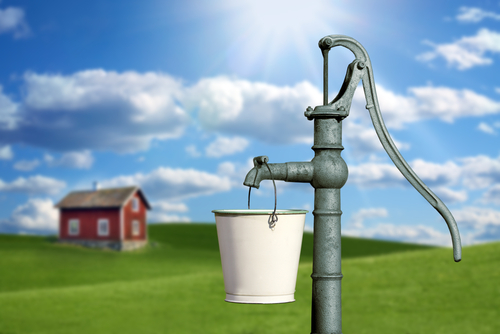If you are interested in an FHA reverse mortgage, and your property has a well or septic tank, there are some specific requirements you will need to be aware of.
Connecting to Public Services
 With either a well or a septic tank, you will be required to connect to public water and sewage at the street, if you have access to them. The appraiser will mark in the report whether or not the utilities are available.
With either a well or a septic tank, you will be required to connect to public water and sewage at the street, if you have access to them. The appraiser will mark in the report whether or not the utilities are available.
There is one exception: if the cost to connect to either service is greater than three percent of the appraised value of the property, the connection is deemed too expensive and can be waived. You need to provide a contractor’s estimate to qualify for this exception, and the estimate can include materials, labor, and city and county tap fees.
The Value of Water and Sewer Services
HUD has put specific rules in place because quality access to water and sewage is an important part of a property’s value. In a worst case scenario — where a reverse mortgage borrower walks away from a property or passes away — HUD becomes the property owner, and the property needs to be marketable.
Well Water Requirements for a Reverse Mortgage
Wells are eligible for FHA financing, and can be private, shared, or communal. Each system has very different requirements, but there are also some similarities. All wells must:
- Meet state or local drinking water standards for quality.
- Provide sufficient quantity to supply peak demand.
If the property has a shared or community well, you must also:
- Have a well agreement in place.
- Allow for future owners of connected properties to access the well.
An underwriter can call for a well to be tested for quality and supply. We suggest that you contact us with the particulars of your well, so we can discuss the requirements that apply to your situation.
Septic Tank Requirements for a Reverse Mortgage
Septic tanks are fairly common, so they seldom complicate reverse mortgage applications. If the appraiser doesn’t cite any particular issues with the tank, nothing further should be needed.
However, if you are on a shared septic system, which is relatively rare, the requirements increase significantly. The most important condition is that the shared septic cannot serve more than four properties. If you are on a shared septic tank, please contact us to learn more about the rules for your particular situation.
Properties with Both Wells and Septic Tanks
There are some distance requirements around a well if a septic is also present on the property, for the purposes of an FHA reverse mortgage. The well must be:
- 50 feet from a septic tank.
- 75 to 100 feet from the septic tank drainfield, depending on the state.
- 10 feet from the property line, with a few exceptions.
Consult a Loan Officer
If you are unsure about your state’s requirements, give us a call and we will help you determine the exact requirements for your property.









6 Responses
I would like to find out what restrictions ECHM has in regards to a shared well how many are allowed
Hello William. I don’t know exactly what you mean by ECHM, so I’ll contact you by email to find out. A shared well has many requirements to be approved, and it can only serve four homes max.
Is a 300 gallon septic tank accepted for a reverse mortgage?
Hello Carolann. Yes, a 300 gallon septic tank is acceptable for a reverse mortgage. The concern in the eyes of HUD/FHA is how close the septic tank is to a private well, should the homeowner have both a well and septic tank. If you have public water, then there are no septic specific requirements (other than it being functional).
We have a cesspool.
There are no city sewers.
No mortgage, value=300k
Can we get a reverse mortgage?
Hey Bob. Here are the guidelines on sewage systems –
The lender must confirm that a connection is made to a public or community sewage disposal system whenever feasible and available at a reasonable cost. If connection costs to the public or community system are not reasonable, the existing onsite sewage disposal systems are acceptable provided they are functioning properly and meet the requirements of the local health department. When the onsite sewage disposal system is not sufficient and an off-site system is available, the lender must confirm connection to an off-site sewage system. When the onsite sewage disposal system is not sufficient and an off-site system is not available, the lender must reject the Property unless the onsite sewage disposal system is repaired or replaced and complies with local health department standards.